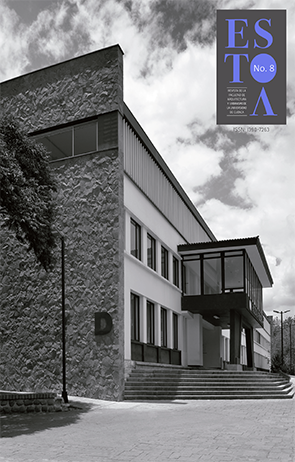Restoration of the Stone Façades of the Alicia Alonso Havana Great Theatre
DOI:
https://doi.org/10.18537/est.v005.n008.07Abstract
The current paper aims at the restoration of the facades of the Alicia Alonso Havana Great Theatre, headquarters of the prestigious National Ballet of Cuba and considered an important building with recognized tangible and intangible values. It is located at the border of the old city. Its stone façades had different states of damages that were undergoing a constructive process based on proper conservation treatment. The most remarkable characteristics of the main morphologies of alteration, factors and mechanisms that influenced their evolution were shown in this work as well as the proposals of solutions to eradicate them, dealing mainly with the cleaning of the stone, selection of the used method, and the corresponding results.
Keywords: façades; stone; deterioration; restoration.
Downloads
References
De las Cuevas, J. (2001). 500 Años de Construcciones en Cuba. Cuba: D.V. Chavín.
Alfonso, F.R. (2005). Gran Teatro de La Habana: biografía de un coliseo. Cuba: Ed. Gran Teatro de La Habana.
Esbert-Alemany, R. M & Fierro O. & M, (2006). Analysis of Stone material damages in buildings. Recopar, 3, 26-29.
Estévez, E. (2013). Gran Teatro de La Habana. Proyecto de Restauración. Cuba: Grupo Capitel.
Giuseppe, C. y Pardo, E. (2008). Deterioro en muros de edificios ocasionado por eflorescencia salina. España: MACLA 9.
Verges-Belmin, V. (2008). Glossaire illustre sus les forms d’alteration de la pierre, Monuments & Sites”. Francia: ICOMOS.
Weiss, J. (1996, 1979). La Arquitectura Colonial cubana. Cuba – España: COPT Junta Andalucía.
RAVELO, G, (2011). Influencia de los elementos climáticos en el deterioro de las fachadas de edificaciones del barrio Colón. Arquitectura y Urbanismo, 32 (3), 39-41.
Published
How to Cite
Issue
Section
License
Copyright (c) 2017 Estoa. Revista de la Facultad de Arquitectura y Urbanismo de la Universidad de Cuenca

This work is licensed under a Creative Commons Attribution-NonCommercial-ShareAlike 4.0 International License.
The Journal declines any responsibility for possible conflicts derived from the authorship of the works that are published in it.
The University of Cuenca in Ecuador conserves the patrimonial rights (copyright) of the published works and will favor the reuse of the same ones, these can be: copy, use, diffuse, transmit and expose publicly.
Unless otherwise indicated, all contents of the electronic edition are distributed under a Creative Commons Attribution-NonCommercial-ShareAlike 4.0 International License.




